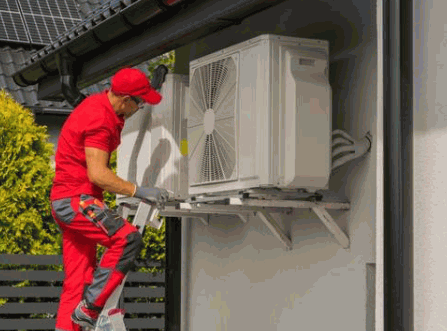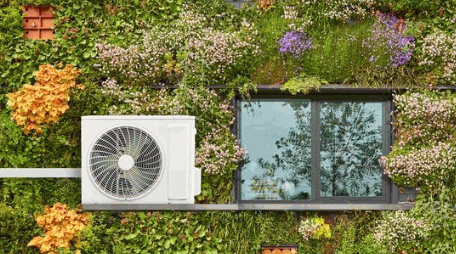Air source heat pumps have gained significant popularity due to their energy efficiency and environmentally friendly heating and cooling capabilities. As with any HVAC system, regular maintenance is essential to ensure optimal performance. This article will provide an overview of what an air source heat pump is, how it operates, and the importance of maintaining cleanliness. Additionally, a step-by-step guide on the cleaning process will be included, along with a list of necessary tools and maintenance tips to ensure the system functions effectively for years to come.
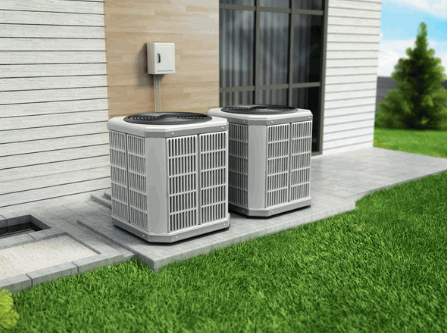
What Is an Air Source Heat Pump?
An Air Source Heat Pump (ASHP) is a sophisticated heating and cooling system that transfers heat between the interior of a building and the external environment, utilizing ambient air as a medium for thermal exchange. Innovations such as FrostWash and Mold Guard help maintain performance and cleanliness.
Essentially, it absorbs heat from the outdoor air and transfers it indoors or extracts heat from the indoor air to cool the space, thereby serving as an energy-efficient solution for both residential and commercial HVAC systems. The thermostat controls allow precise adjustment of temperature settings for enhanced energy efficiency.
Notable manufacturers in this sector, such as Mitsubishi and Hitachi, offer advanced models that significantly enhance energy efficiency and occupant comfort across a variety of climatic conditions. Mitsubishi heat pumps feature unique technologies to improve performance and reduce energy consumption.
Learn about: How Much Does It Cost To Install An Air Source Heat Pump
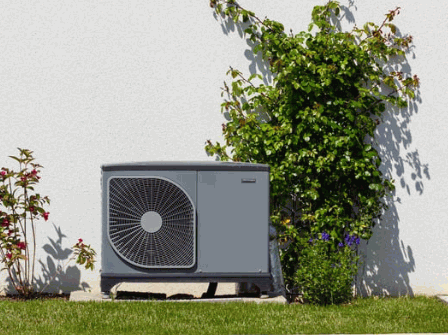
How Does an Air Source Heat Pump Work?
The operation of an air source heat pump is predicated on a refrigeration cycle that efficiently transfers heat, utilizing a refrigerant that absorbs and releases heat as it circulates between the indoor and outdoor units.
When the outdoor temperature is elevated, the heat pump extracts heat from the external air and transfers it indoors. Conversely, during colder conditions, the system can reverse its operation to provide cooling by expelling indoor heat to the outside.
This dual functionality renders air source heat pumps highly versatile for comprehensive climate control throughout the year.
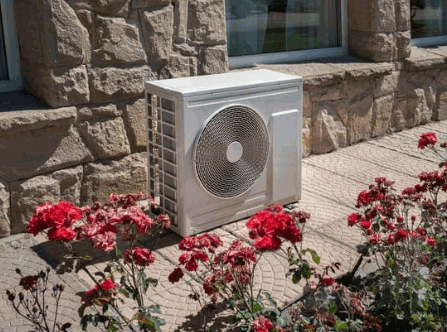
Why Is It Important to Clean an Air Source Heat Pump?
Regular maintenance of an air source heat pump is essential for ensuring its efficiency and extending its operational lifespan. Accumulation of dirt and debris can obstruct proper airflow, thereby diminishing the system’s capacity to effectively heat or cool. Routine cleaning of air filters and cleaning coils are crucial tasks.
Cleaning filters, coils, and other components are vital not only for optimal energy efficiency but also for reducing energy consumption, which translates into lower utility expenses. Failure to perform regular maintenance may lead to complex repairs, decreased performance, and potentially complete system failure. Additionally, professional servicing may be required if issues persist.
Therefore, it is imperative for homeowners to prioritize cleanliness and routine upkeep of their air source heat pumps.
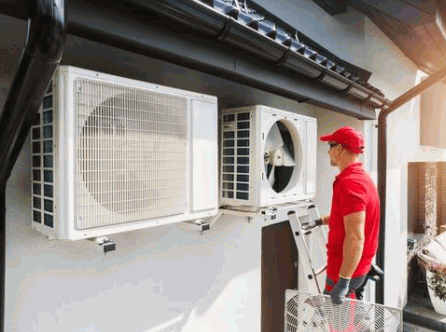
What Are the Tools and Supplies Needed for Cleaning an Air Source Heat Pump?
To effectively clean an air source heat pump, it is essential to have several important tools and supplies to ensure that all components are properly maintained and functioning at optimal levels. This includes a comprehensive self-maintenance guide and adherence to the user manual.
A soft bristle brush and vacuum cleaner are crucial for the removal of dirt from both the outdoor and indoor units. A suitable cleaning solution is necessary for the maintenance of the condenser and evaporator coils. Furthermore, having a screwdriver readily available will facilitate access to various parts and ensure proper airflow. Additionally, the ability to check refrigerant levels and the condensate drain is vital for maintaining optimal performance.
Soft Bristle Brush
A soft bristle brush is a critical tool for the maintenance of an air source heat pump, as it effectively removes dirt and debris from delicate components without causing any damage, thereby preventing the need for complex repairs.
Maintaining the efficiency of a heat pump is essential for optimal performance, and employing the appropriate tools can significantly impact results. The soft bristle brush not only prevents scratches on sensitive surfaces but also ensures that the coils and fins, which are critical for heat exchange, remain in excellent condition.
Tips for Cleaning:
- Tip 1: Begin by turning off the heat pump to ensure safety during the cleaning process.
- Tip 2: Apply light pressure when brushing, concentrating on areas where dirt tends to accumulate, such as the fins and coils.
- Tip 3: Regular cleaning, ideally every few months, can extend the lifespan of the unit and enhance its overall efficiency.
By incorporating this tool into your maintenance routine, you can effectively safeguard your heat pump’s critical components from potential wear and tear.
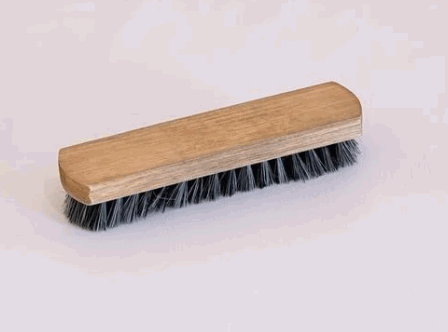
Vacuum Cleaner
A vacuum cleaner serves as an essential tool for the maintenance of air source heat pumps, particularly for the removal of accumulated dust and debris from both the outdoor unit’s condenser coil and the indoor evaporator coil. Regular use of the vacuum can prevent obstructed airflow and ensure proper operation.
Utilizing the appropriate types of vacuum cleaners is critical for effective maintenance. Bagless vacuum cleaners are commonly favored due to their ease of emptying and low maintenance requirements. When selecting a vacuum, it is advisable to choose models that are equipped with fine filters to capture small particles, thereby ensuring efficient operation without risking damage to the sensitive components of the heat pump.
- Always employ a soft-bristle brush attachment during cleaning to prevent scratches and damage.
- Regularly inspect for any accumulated debris around the unit to maintain optimal airflow.
- Ensure that the vacuum’s suction power is adjustable, enabling a reduction in intensity when working near sensitive areas.
By adhering to these straightforward yet effective best practices, owners can significantly extend the lifespan of their systems, ensuring that they operate at peak efficiency.
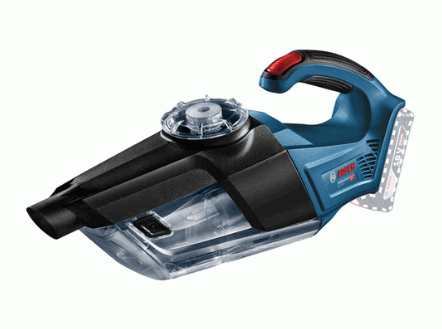
Water and Mild Detergent
Utilizing a combination of water and mild detergent serves as an effective cleaning solution for an air source heat pump. This approach aids in breaking down and removing stubborn grime without risking damage to the unit, thereby ensuring optimal performance across various seasons. Proper cleaning is crucial not only for aesthetic considerations but also for enhancing efficiency and extending the lifespan of the unit. Ensuring the electrical supply is safely managed during cleaning is also essential.
It is recommended that individuals responsible for maintaining their heat pumps establish a regular cleaning routine to prevent the accumulation of dirt that could lead to more significant issues over time.
To prepare and apply the cleaning solution, please follow these systematic steps:
- Prepare the mixture: In a clean bucket, combine equal parts of warm water and a mild detergent. Ensure that the detergent is gentle to avoid any potential damage to the heat pump’s components.
- Target specific areas: Direct the cleaning solution towards the evaporator and condenser coils, as these components are particularly susceptible to grime accumulation.
- Application tip: Employ a soft brush or cloth to gently scrub the surfaces, ensuring that dirt is dislodged without scratching the metal.
- Rinse thoroughly: It is essential to rinse away all residues with clean water. Ensure that no soap remains, as residue buildup can lead to diminished efficiency and mechanical problems.
By adhering to these guidelines, one can effectively maintain the performance and efficiency of the heat pump.
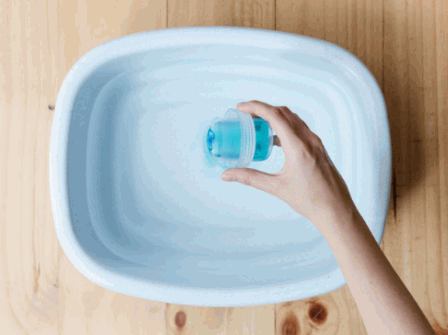
Screwdriver
A screwdriver is an essential tool for accessing air filters and various components of an air source heat pump, facilitating thorough cleaning and maintenance. It allows for easy access to thermostat controls and other internal parts that require upkeep.
Familiarity with the different types of screwdrivers available can greatly enhance the efficiency of these maintenance tasks. For example, standard Phillips screwdrivers are commonly utilized due to their ability to securely grip screws, while flat-head screwdrivers offer greater versatility for various screw types. Additionally, Torx screwdrivers may be necessary if the unit contains security screws that require a specialized tool.
To safely open the unit, it is imperative to ensure that the device is powered down and to wear protective gloves. Regular checks of the filters are crucial, as they contribute to maintaining optimal performance and air quality. It is advisable to establish a maintenance schedule for inspecting and replacing filters every few months or as needed.
The following steps should be incorporated into the maintenance routine:
- Inspect filters for dirt and obstructions.
- Replace filters in accordance with the manufacturer’s guidelines.
- Ensure that all screws are tightened securely after maintenance.
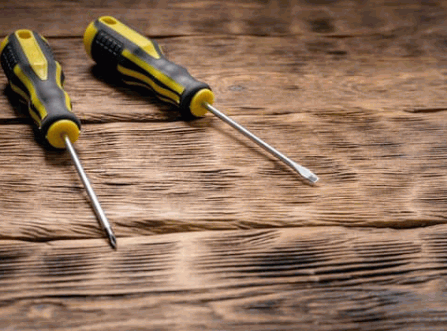
Fin Comb
A fin comb is a specialized instrument designed for straightening the fins on the coils of an air source heat pump. This tool is essential for ensuring proper airflow and maximizing efficiency, both of which are critical for the optimal performance of heating and cooling systems. Regular maintenance of these components can significantly influence energy consumption, thereby extending the lifespan of the unit and reducing utility costs. Proper lubrication of parts should also be considered to enhance durability.
To effectively utilize the fin comb, please adhere to the following steps:
- Begin by turning off the power to the heat pump to mitigate any safety risks.
- Carefully insert the fin comb into the damaged fins, applying gentle pressure to straighten them without causing further bending.
- Proceed methodically along the coil to ensure that all fins are properly aligned, allowing for unobstructed airflow.
- After utilizing the fin comb, inspect for any remaining damage or irregularities that may require further attention.
Maintaining proper airflow is crucial for the energy efficiency of the system; when fins are bent, airflow is impeded, resulting in increased energy consumption and the potential for system failure. In such cases, consulting a technician, perhaps even from Elephant Energy, might be beneficial.
In instances where fin damage is extensive or complex issues arise during maintenance, it is advisable to seek professional servicing by certified HVAC technicians. Experts possess the expertise to diagnose and address intricate repairs, ensuring the air source heat pump operates as designed.
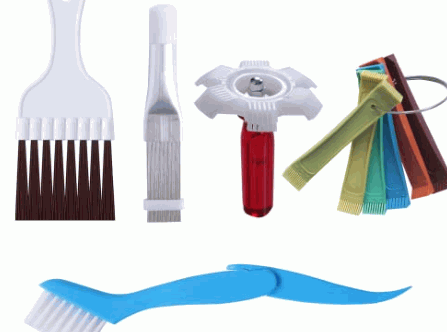
How Often Should an Air Source Heat Pump Be Cleaned and Serviced by HVAC Technicians?
The frequency of cleaning an air source heat pump is contingent upon various factors, including usage patterns, environmental conditions, and the specific maintenance guidelines provided by manufacturers such as Mitsubishi and Hitachi.
It is generally advised to clean the unit at least twice a year to maintain optimal energy efficiency and prevent the accumulation of dirt and debris. Monitoring your usage with advanced thermostats can also help in maintaining efficiency.
Furthermore, conducting regular inspections of air filters and coils can improve the overall performance of the system and extend its lifespan.
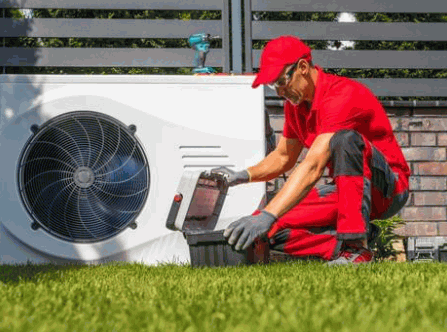
Step-by-Step Guide on How to Clean an Air Source Heat Pump
Cleaning an air source heat pump requires a systematic approach to ensure that all components operate correctly and maintain optimal airflow, which is crucial for energy efficiency and overall performance.
This comprehensive guide delineates the essential tasks involved, beginning with the precautionary step of turning off the power to the unit, followed by the cleaning of critical components such as air filters, coils, and the condensate drain. This structured process will aid in the effective maintenance of the system.
Turn off the Power
Before initiating any cleaning process on an air source heat pump, the foremost and most critical step is to disconnect the power supply to ensure safety during maintenance.
This action is not merely a precaution; it is an essential aspect of responsible care. Completely turning off the power helps prevent any accidental activation of the system while maintenance is being performed, thereby reducing the risk of personal injury and equipment malfunction. To effectively locate the power switch, it is advisable to consult the user manual or check the circuit breaker associated with the heat pump system. Confirmation that the power is off can be achieved by verifying that all indicator lights on the unit are extinguished. Neglecting this fundamental step can pose serious risks, including electrical shocks and potential damage to sensitive components.
- Consult with a technician if any unusual issues are detected during maintenance.
Always double-check the power status before commencing work. Maintain a clean workspace to ensure the safety of all individuals involved.
By prioritizing safety, one can approach the cleaning process with confidence and efficiency.
Remove Debris and Obstructions in Air Source Heat Pumps
Removing debris and obstructions from both the indoor and outdoor units of an air source heat pump is essential for maintaining proper airflow and maximizing efficiency.
Ensuring that these units are free from leaves, dirt, and other unwanted materials is not solely a matter of aesthetics; it is critical for optimal performance, energy savings, and for maintaining the durability provided by systems like Mitsubishi heat pumps. Regular maintenance practices, such as checking filters and clearing the surrounding area, can result in significant improvements in both airflow and the longevity of the system.
Proper airflow is paramount, as any restrictions can place undue strain on the unit, resulting in inefficient operation and potential damage over time.
- Always turn off the system before performing maintenance to ensure safety.
- Utilize a soft brush or vacuum for cleaning delicate components.
- Avoid using harsh chemicals that may adversely affect the unit’s materials.
It is advisable to maintain a clear perimeter of at least two feet around the outdoor unit to facilitate adequate ventilation and discourage the accumulation of surrounding debris. By keeping the air source heat pump unobstructed, one can not only prolong its lifespan but also enhance its energy efficiency, ultimately leading to financial benefits.
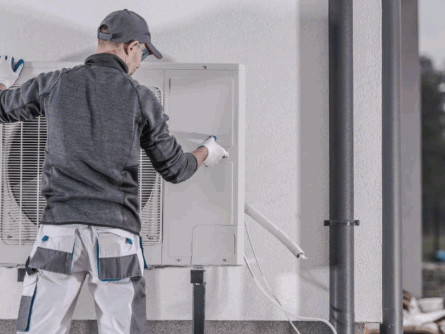
Clean the Fins and Coils
Cleaning the fins and coils of an air source heat pump is essential for maintaining energy efficiency and ensuring optimal heat transfer during operation.
To achieve this, the cleaning methods must be executed with care and precision, as improper handling may lead to damage to the sensitive components. Regular use of protective technologies like Hitachi’s Mold Guard can help in maintaining these components. It is advisable to begin by turning off the power to the heat pump to ensure safety throughout the cleaning process. Utilizing a soft brush, one should gently remove any dust, debris, or dirt from the fins and coils.
The application of a specialized cleaning solution may assist in breaking down stubborn grime. It is critical to verify that the cleaning solution is approved for use on heat pump components, as harsh chemicals may corrode or damage the fins and coils.
Regular maintenance through effective cleaning not only enhances the overall performance of the system but also significantly extends its lifespan, making it a worthwhile investment for any homeowner. Brands like Mitsubishi and Hitachi offer systems with features that can further enhance these benefits.
- Ensure power is off before beginning.
- Use a soft brush for debris removal.
- Apply an approved cleaning solution.
- Avoid harsh chemicals to prevent damage.
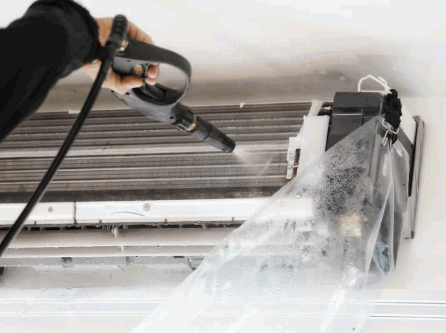
Check and Clean the Fan Blades
Inspecting and cleaning the fan blades of an air source heat pump is crucial for ensuring smooth operation and maintaining proper airflow throughout the system.
Proper maintenance of these components is essential for achieving an efficient heating and cooling cycle. Accumulation of dirt and dust on fan blades can result in unnecessary strain on the system, potentially leading to operational issues that adversely affect performance and longevity.
The following steps outline the procedure for safely accessing and cleaning the fan blades:
- Turn off the power: Ahead of commencing any cleaning procedure, ensure that the unit is completely powered down to prevent accidents.
- Remove the fan guard: Carefully unscrew and detach the guard to expose the blades for cleaning.
- Use a vacuum or soft brush: Gently remove dust and grime buildup from the blades, ensuring that no damage occurs.
- Wipe down with a damp cloth: For stubborn spots, a lightly dampened cloth may be utilized to achieve thorough cleaning.
- Reattach the guard: Once the cleaning is complete and satisfactory, carefully reassemble the fan guard before restoring power.
Maintaining fan blades not only facilitates improved airflow but also significantly enhances energy efficiency, resulting in lower electricity bills and an extended lifespan of the system.
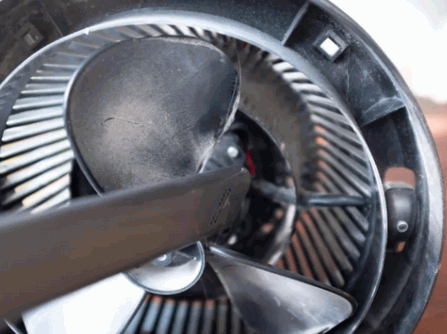
Clean the Condensate Drain
Cleaning the condensate drain of an air source heat pump is essential to prevent clogs that can lead to water damage and operational malfunctions. This maintenance task is crucial for homeowners to ensure that their heating systems remain efficient and reliable. Regular inspection of the condensate drain can facilitate early identification of potential issues, thereby minimizing the risk of a complete system shutdown.
Indicators of possible clogs include:
- Unusual noises emanating from the pump
- Visible water pooling around the heat pump
- Increased humidity or water stains in nearby areas
If these symptoms are overlooked, they can escalate into more severe issues, such as water damage to the surrounding structure and decreased heating effectiveness. Routine maintenance encompasses more than just cleaning; it requires a comprehensive examination by an HVAC technician to ensure operational integrity.
To adequately access and clean the drain, follow these steps, ensuring lubricate parts if necessary for smooth operation:
- Turn off the heat pump and disconnect the power supply.
- Locate the condensate drain line, typically situated on the outdoor unit.
- Remove any visible debris or obstructions.
- Utilize a wet/dry vacuum to remove any stagnant water or buildup.
- Flush the drain line with a mixture of vinegar and water to eliminate mold growth and other build-up.
- Reconnect all components and restore power.
By routinely adhering to these steps, homeowners can significantly enhance the lifespan and performance of their air source heat pump.
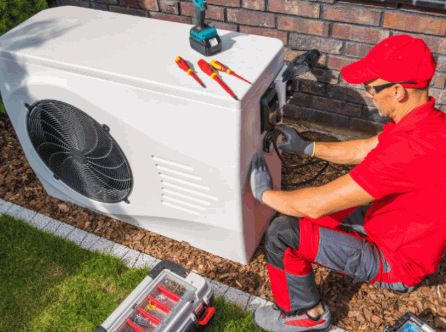
Inspect and Replace Air Filters in Mitsubishi Heat Pumps
Regular inspection and replacement of air filters in an air source heat pump are essential for maintaining efficient operation and ensuring optimal indoor air quality.
Air filters play a critical role in the overall performance of a Mitsubishi heat pump system, as they are responsible for capturing dust, allergens, and other contaminants that can obstruct airflow. To ensure optimal functionality, it is advisable to assess the condition of these filters at least once a month. If the filters are found to be dirty or clogged, replacing them is a prudent course of action.
- Always turn off the heat pump prior to conducting any inspections or replacements.
- When removing a filter, take note of its orientation to ensure proper installation of the new filter.
- Filters typically require replacement every 1 to 3 months, depending on usage and environmental conditions.
Clean filters significantly enhance airflow, contributing to improved energy efficiency and reduced energy costs, thereby making regular maintenance a valuable investment for any homeowner. Utilizing technologies like FrostWash and Mold Guard can further ensure the longevity and performance of your air source heat pump.
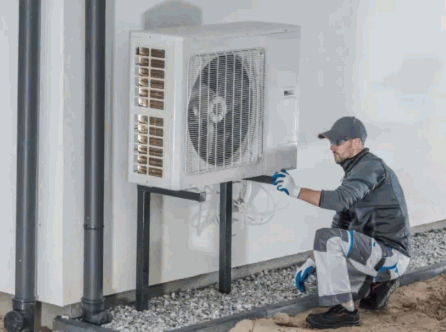
Tips for Maintaining an Air Source Heat Pump
Proper maintenance of an air source heat pump is essential for maximizing its performance and longevity. Homeowners can benefit from adhering to a set of maintenance guidelines to proactively manage their systems.
Regular checks of refrigerant levels, cleaning or replacing filters, and ensuring that both the indoor and outdoor units receive adequate airflow are critical practices. Furthermore, scheduling professional servicing with qualified HVAC technicians can help prevent more complex repairs and ensure that the unit operates efficiently for many years.
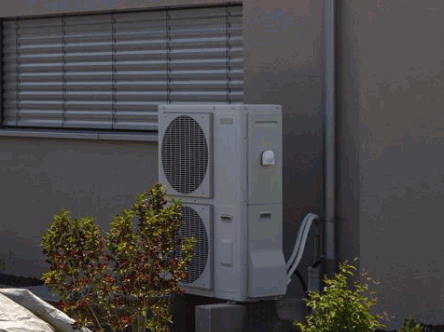
Common Mistakes to Avoid When Cleaning an Air Source Heat Pump
Maintaining an air source heat pump, such as those by Mitsubishi or Hitachi, can be a straightforward process; however, many homeowners often commit common errors that may impede performance and result in costly repairs.
Examples of such mistakes include:
- Improper cleaning of coils
- Failing to inspect the condensate drain
- Neglecting timely filter replacements
Recognizing and avoiding these pitfalls is essential for ensuring that the system operates at optimal efficiency.
When should you call a professional to Clean an air source heat pump?
Routine cleaning and maintenance of an air source heat pump can frequently be managed by homeowners; however, there are instances when it becomes necessary to engage a professional for servicing, particularly to address complex repairs or concerns related to system performance. Companies like Elephant Energy offer expert services to ensure efficient and reliable operation.
Indicators such as unusual noises, ongoing inefficiencies, or refrigerant leaks suggest that it is prudent to consult qualified HVAC technicians. This approach is essential for ensuring the longevity and efficiency of the system.
